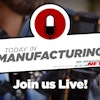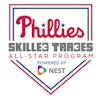The National Safety Council estimates the cost of one lost time accident at about $27,000 with punitive damages and lost production time ranging into the millions of dollars. Most hoist-related accidents that occurred in North America could have easily been prevented by simply ensuring that users were properly trained on the operation, safe rigging, inspection and maintenance procedures of the hoist. Training of operators isn’t just the smart thing to do, it’s also necessary. OSHA and ASME requires that only competent persons operate and maintain hoist systems and recognizes training as the way to establish competent employees. Do not look at training as an expense but as an investment in cost reduction by decreasing injuries, reducing product malfunctions and increasing productivity. Whenever you lift, make sure you do the job right, from your initial inspection to the end of the lifting operation.
PPE Requirements
Before you start, you should use all the Personal Protective Equipment (PPE) normally required for a work area, including eye and hand protection, and a hard hat. Any time a load is lifted above 5 feet or shoulder height, there is a greater risk of head injury. Wearing a hard hat will minimize the risk.
Pre-Operational Checks
Users should follow pre-operation inspection and preparation procedures to identify potential problems, reduce the chances of accidents, and enhance the safety of their work environment. OSHA 1910.179(j)(2) defines the activities performed for frequent inspections (daily). The five components of this inspection are:
- All function operating mechanisms for maladjustment or excessive wear
- Air or hydraulic systems for deterioration or leakage
- Hooks for deformation or cracks
- Hoist chains for excessive wear, twisting, distorted or stretched links
- Rope reeving for noncompliance with manufacturers’ recommendations
Columbus McKinnon’s training department presents a walk-through of a proper pre-operation check of a hoist on their YouTube Channel: https://www.youtube.com/watch?v=HD-n4_fRtlk&feature=digest_fri.
Two prime causes of accidents are overloading and poor rigging. To prevent accidents, we suggest these guidelines:
- Know the hoist lifting capacity
- Always know the weight of the object you are lifting
- Never exceed the working load limit
- Train operators on proper rigging techniques as well as hoist operation
- Have rigging handbooks and proper equipment available for use.
Lever tools and manual hoists or chain falls are designed to lift under the power of one person. It should not take two people to pull on hand chain, or a lever arm. Never put an extender (cheater bar) on a lever tool. This is a sure sign you are overloading the hoist. If it takes 58 pounds of pull force to raise one ton, any pull force over this value will overload the hoist. Consult the manufacturer’s specifications and train your operators on what each pull force should be.
Many domestic (and some foreign) hoist manufacturers offer overload protection devices, either as standard equipment, or as an added cost option. This device protects the user, the overhead structure, and the hoist from an “excessive overload condition.” In powered hoists, this is usually a slip clutch within the gear case or on the drive of the motor. For hand hoists several hoist manufacturers utilize a friction type clutched hub as part of the hoist’s chain wheel or lever arm. When the pull on the lever or hand chain is great enough to slip the clutch and prevent the load from being lifted, the operator becomes aware that the hoist is overloaded.
Hoist inspectors should be properly trained in hoist maintenance. A good maintenance and inspection program is critical to ensure hoist safety. ASME B30.11 has added the requirements for training for anyone maintaining hoist equipment. All ASME standards within the next 3 to 4 years will require training for proper maintenance of hoist equipment. ASME B30.16 outlines periodic and frequent inspections for under-hung hoists. ASME B30.21 covers lever tools.
Equipment being used by qualified riggers and operators and routine inspections performed by properly trained inspectors ensures:
- safe equipment
- less maintenance costs
- better reliability
- increased life of equipment
- fewer incidents
Some new technologies have emerged to help increase hoist safety. RFID chips assist inspectors in writing up reports and keeping accurate records. Hoist hooks can have markings embossed into the forging to assist in measuring throat openings or wear. In the entertainment industries hoists can be equipped with encoders and load cells to help monitor operation and proper loading to ensure safety of performers.
If safety is not your top priority, it is only a matter of time before an accident injures a worker, or worse. Successful companies understand that training in hoist operation and rigging practices is an investment that pays. Fewer accidents, higher morale, reduced downtime, and greater productivity are but a few of the dividends.
To learn more about hoist and rigging safety, subscribe to our blog at www.cmcolive.com.























